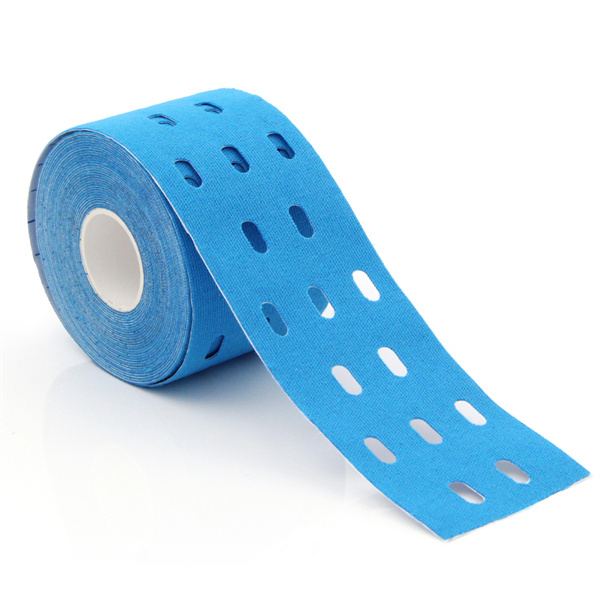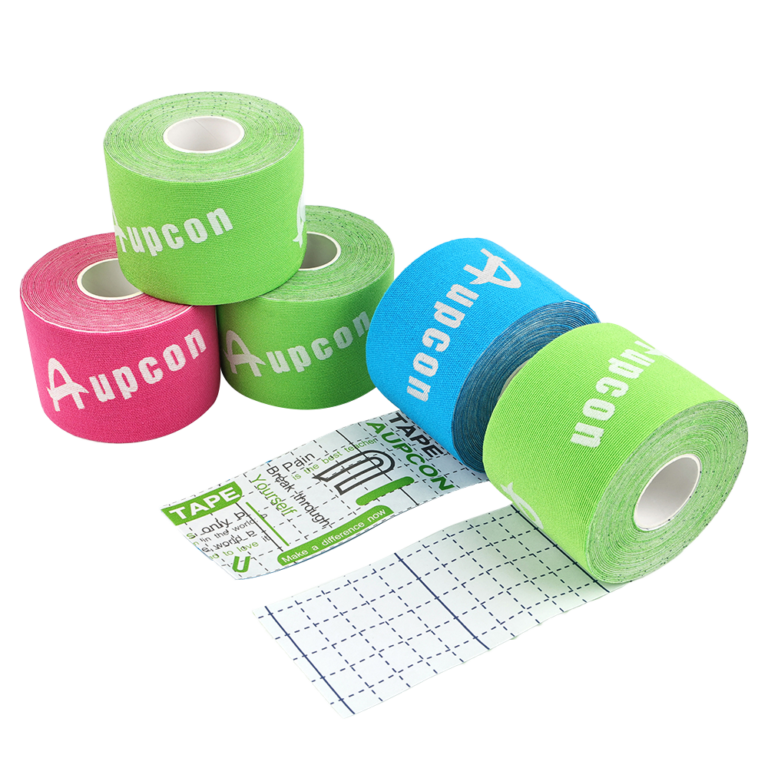Why use colored sports tape?
colored sports tape can be used for a variety of techniques to support muscles throughout the body.
There are different opinions on how and why the tape works, but it begins to limit muscle movement and aid proprioception, the body’s innate ability to judge the position of limbs.
When athletes move specific muscles and learn which ones are relevant to their injury, they feel the tape on them. Currently, sports tape is available for a variety of repairs and needs.

What kinds are there?
Rigid Tape: This is a rigid material that reduces joint movement, has little elasticity, and contains a zinc oxide-based adhesive that is strong and adheres well to the skin.
Under colored sports tape: This is under rigid tape and is better for the skin.
Elastic Tape: This provides flexibility and can be applied to the skin, muscles and soft tissue; it is usually made of cotton and allows the skin to breathe.
Felt tape: acts as a skin barrier, does not contain glue and is generally more comfortable.
Adhesive Bandages: These bandages don’t have any glue in them; they stick to each other as they wrap around a joint or muscle.
Sports tape: This is most common in sports; it adapts to the skin and adapts to the movement.
what should i use it for?
Some common uses of tape are:
Stabilize the ankle
support knee
strengthen the shoulders
open elbow
Supports weak or injured muscles
Improve muscle contraction
prevent overuse
How do I use colored sports tape?
Make sure the skin is clean and free of local damage or conditions such as eczema. Place colored sports tape as directed by your athletic trainer and reinforce with protective pads if necessary.
The location of the tape is highly dependent on the specific muscle being taped. Make sure the tape runs smoothly and isn’t so tight that it breaks the cycle.
If the individual is experiencing “pins and needles,” it may be too tight. If this is the case, cut the tape off and start over with a longer section.
How do I remove it?
Cut the colored sports tape with scissors instead of tearing long strips; no matter the type of tape, your skin will thank you. Be sure to remove the tape before it becomes less attractive.
Over time, tape loses its adhesive and may change color depending on the amount of sweat, dirt, and debris on the skin.
things to remember
Apply the colored sports tape only to healthy skin. Avoid sunburns, lotioned skin, and wrinkled areas such as hands and feet.
Consider making duct tape part of your routine instead of a magic fix for your screaming muscles.
Use the appropriate tape for your specific needs. Remember that muscles need rest, and muscles that are overworked, even with tape, can be injured by improper form.



